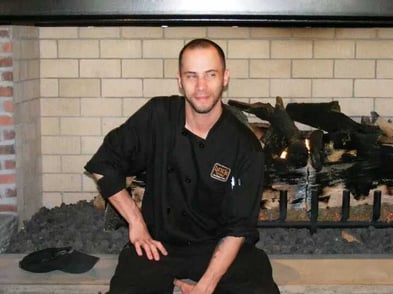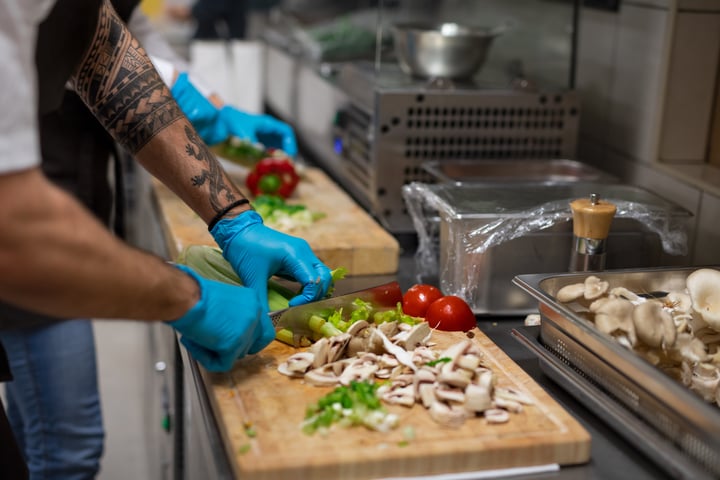
- Home
- Crunchtime Blog
- The Shift: How My Distrust in Restaurant Systems Launched My Tech Career

The Shift: How My Distrust in Restaurant Systems Launched My Tech Career
About the Author
Justin Conant is a product manager at Crunchtime; he has nearly 20 years of experience in the restaurant industry in a variety of roles and concepts, from dishwasher to general manager to executive chef, from full service to cafes to commissary facilities. He has a degree in hotel/restaurant management from Johnson & Wales University.
“There’s no way the computer knows the inventory better than me,” — said me, a restaurant operator at the time who never, ever, ever found this particular inventory system to be wrong, but couldn’t help but think that I knew best based on previous experience.
Every week I had been emailing and calling our HQ office, completely confident that our system was totally off. That is, until one shift in particular where I finally understood why the system was, in fact, right, and realized what I should’ve been directing my skepticism toward.
Let me take you through the shift from my perspective.
Running a successful restaurant requires a delicate balance of creativity, customer service, and meticulous management. For better or worse, being in a managerial position in a restaurant can feel like being alone on a desert island. I constantly felt like I was better off doing everything myself, to make sure that priority work was done right, and because I felt that the work was in the best hands that way.
Not a day went by that I didn’t face a ton of competing priorities; guest satisfaction, food safety and preparation, ordering, training, payroll, administrative work, and, of course, inventory—a crucial aspect that often goes unnoticed.
This meant having eyes everywhere, trusting my instincts, and tapping into my experience to guide me through whatever that day’s shift would bring. It also meant that I needed to rely on technology to somehow make all those priorities happen. As someone who had always done things my own way, this was easier said than done.
Coming from previous restaurants where our systems weren’t great, or I didn’t receive any troubleshooting or customer support, I had some serious doubts when the time came for me to trust another yet another inventory system for a new employer.

Having worked in the industry for so many years, I knew all of the ins and outs of how restaurant operations worked behind the scenes. Naturally, in my mind, this meant that I was all-knowing of all inventory processes, and it was just not possible for this new-to-me system—Crunchtime—to have the upper hand. And even though I was the new hire, in my eyes, I was the MVP with home-field advantage, and this system was just a rookie fresh off the bench.
But luckily for me, our Crunchtime system came along with a customer support manager–one who never gave up on me, even when I was convinced there was no way it knew the inventory better than I did.
“No, Justin, you don’t know better than Crunchtime.” – said my incredibly patient counterpart on the end of the phone. Okay, maybe those weren’t her exact words verbatim, but it’s what I needed to hear.
With careful guidance, she took the time to, not only tell me, but walk me through and show me why I didn’t know better than the system, paired with incredible empathy and understanding for why I thought I did.
I came to discover that the system was not the enemy or the culprit, but rather it was the human element that introduced errors into the equation. Simple mistakes, such as missing an invoice or mistyping an incorrect price, were causing discrepancies. Occasionally, there was even some nefarious behavior that was to blame.
My initial mistrust of Crunchtime’s inventory system was misplaced. As a once-skeptical manager, I found myself acknowledging the reliability of the inventory system I had doubted.
In the world of restaurant management, trust in systems and processes is crucial. While technology provides the tools, it is the human element that can either enhance or hinder their effectiveness. By addressing employee errors, providing adequate training, and fostering a culture of accountability, a restaurant can ensure that its inventory system becomes a reliable ally rather than a source of doubt.
Let my lesson be a testament to the transformative power of understanding, communication, and the willingness to adapt in the ever-evolving landscape of the restaurant business.
Oh, and you know that old saying, if you can’t beat ‘em, join ‘em?
I’m now a Product Manager at Crunchtime, focused on ensuring that today's restaurants have the resources and tools that I always wanted (but sometimes didn’t know I needed). This also means I get to work alongside my once incredibly patient counterpart, Jessica, who went from being my incredibly patient counterpart, to my incredibly patient coworker.
Having been on both sides of the fence, I’m passionate about making sure that our customers get the most out of the system, and watching users adopt the system has been really rewarding.
While I may have transitioned from working in the industry to servicing the industry, I love being around restaurant people. I think we all just speak the same language.
The Shift is an industry-focused blog series from contributors who share their inside perspectives on life working in foodservice and restaurants. Click here if you're interested in sharing your story on The Shift.
Share this post
Related


Elevate Your Food Cost Control Strategy with a Vendor Management System


